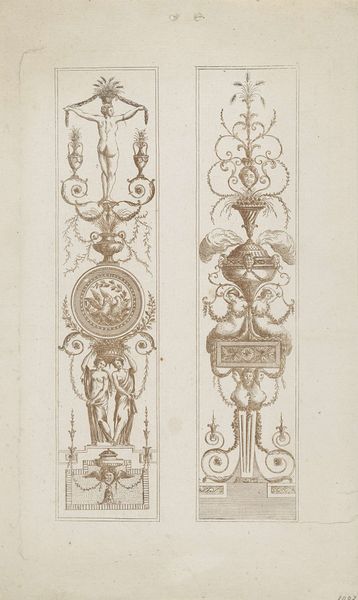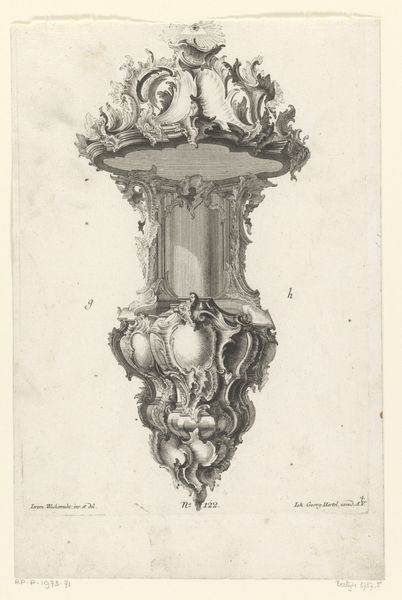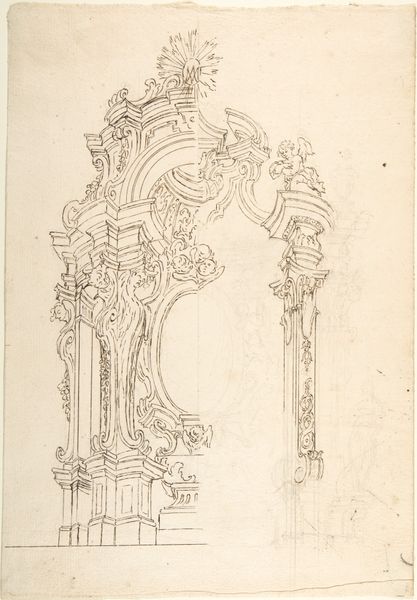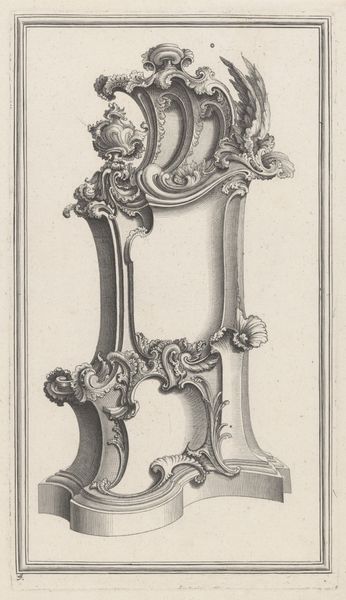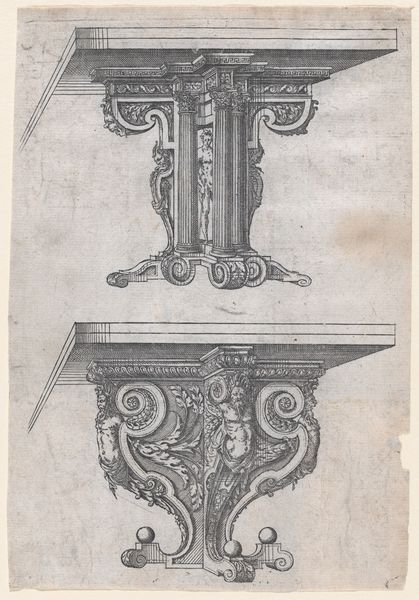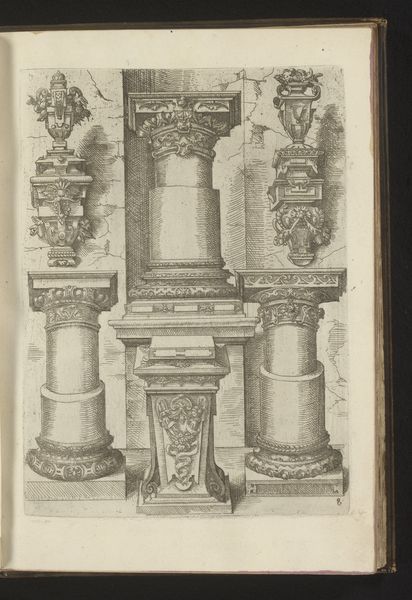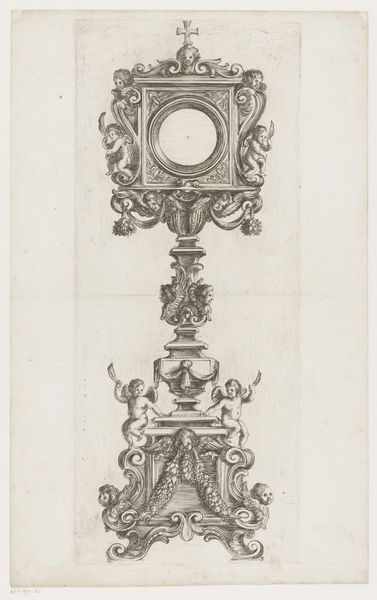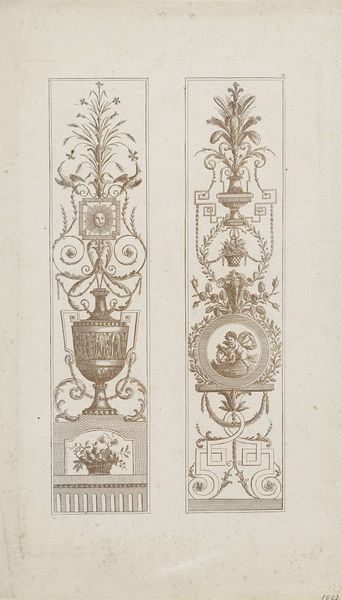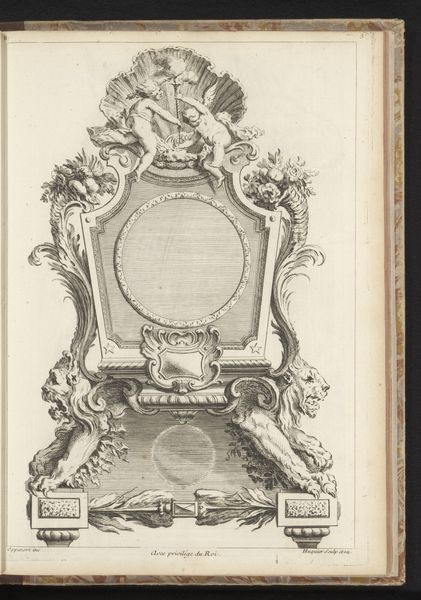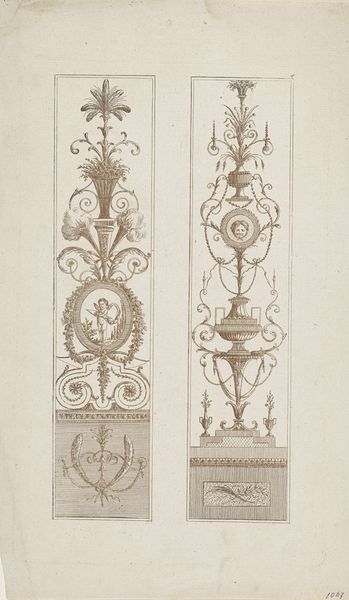
Voor- en zijaanzicht van een klok met daarop een draak c. 1725 - 1750
0:00
0:00
gabrielhuquier
Rijksmuseum
drawing, ink, engraving
#
drawing
#
baroque
#
pen drawing
#
form
#
ink
#
line
#
engraving
Dimensions: height 320 mm, width 224 mm
Copyright: Rijks Museum: Open Domain
Curator: Welcome. Here we have "Voor- en zijaanzicht van een klok met daarop een draak," or "Front and side view of a clock with a dragon on it," an ink and pen drawing from between 1725 and 1750 by Gabriel Huquier, housed here at the Rijksmuseum. What catches your eye? Editor: Intricate is the first word that comes to mind. The rendering is so meticulous, all those flourishes and details. It has an almost fantastical quality, like something out of a baroque fairytale. Curator: It's an engraving, actually, which allows for that incredible level of detail and those very fine lines. These kinds of drawings were often produced as templates or model prints for artisans. They played a crucial role in disseminating designs during the Baroque period, influencing everything from furniture to architectural ornamentation. Editor: The dragon itself is striking, wouldn’t you agree? It perches almost possessively on the clock, acting as a guardian of time. In many cultures, dragons represent power, wisdom, and even chaos. Its presence gives the object a mythic significance that extends beyond mere timekeeping. Curator: Indeed. The dragon in the context of this clock might have been meant to invoke the grandeur of the ruling class, time itself becomes a symbol of their dominion, something to be meticulously measured and controlled. Luxury and power were closely intertwined, influencing design and artistic production. Editor: The other figures— cherubs and stylized lion heads–contribute to that sense of authority. Time is being watched over by symbolic figures suggesting that punctuality and a regimented approach to time were associated with social status. It all speaks volumes about the culture of that era. Curator: Precisely, by dissecting an image like this we glimpse the intricate relationships between art, power, and societal norms, recognizing that art actively participated in shaping cultural values. Editor: Yes, and looking closer at this ornamental clock allows us to recognize the past made visible through the enduring appeal of visual symbols, reminding us that the images which surround us echo a continuity of ideas across time. Curator: So true. I find myself appreciating how decorative art was actually fundamental to cultural life.
Comments
No comments
Be the first to comment and join the conversation on the ultimate creative platform.

